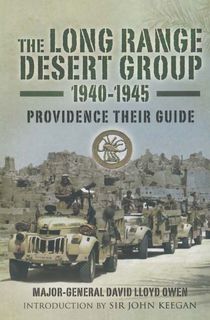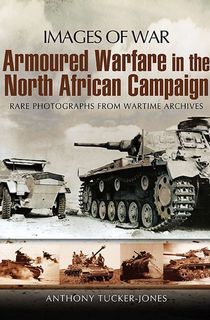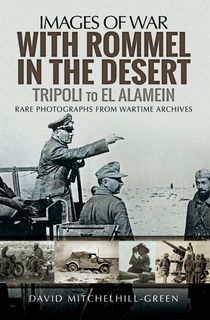The battle for supremacy in North Africa between the Allied and Axis forces is often overlooked in comparison with events elsewhere during World War II. Yet the three-year conflict between 1940 and 1943 played a crucial role in the eventual outcome of the war.
In June 1940, Italy officially joined World War II on the side of Nazi Germany. Within a matter of weeks, and after a series of British raids on Italian-held territories in Libya, Italy launched an invasion of Egypt. The aim was to gain control of the Suez Canal, which was the gateway to the Middle East, and thus deny its enemies access to oil supplies from the Persian Gulf. This brought the Italian forces into direct conflict with the British, who maintained a large garrison in Egypt with the specific purpose of defending the Suez Canal. In early 1941, the fighting escalated when German troops, under the leadership of General Erwin Rommel, entered the fray.
The battle for control of North Africa lasted nearly three years, only ending in May 1943 when British and American troops finally gained control of German-held Tunisia. The victory provided the Allies with the launch pad to mount the invasion of Southern Europe which played such a key part in the eventual outcome of the war.
For anyone interested in learning more about the North African campaign, here are 10 books which provide fascinating insights into events during the three-year conflict.

The Long Range Desert Group, 1940–1945
Major-General David Lloyd Owen took command of the Long Range Desert Group from 1941 until 1945 and led a number of its key operations including the 1942 raid on Tobruk, for which he won the Military Cross. He was therefore uniquely qualified to write this compelling first-hand account of the specialist reconnaissance unit’s important role in the North African campaign which makes for “marvellously exciting reading” (The Spectator).

In Rommel's Backyard
Alastair Timpson was another former member of the Long Range Desert Group who was involved in a series of operations deep behind enemy lines in North Africa. During the war, he kept a meticulous journal of events with the intention of leaving it as a record for his family. Following Timpson’s death in 1998, his son realized its historical importance and offered it for publication. Timpson’s account of the Long Range Desert Group’s activities during World War II in In Rommel’s Backyard is notable for its calm and detached tone, particularly when describing his own considerable acts of heroism.

Armoured Warfare in the North African Campaign
In this book from Pen and Sword’s Images of War series, Anthony Tucker-Jones has assembled an impressive collection of rare photographs to illustrate the important role played by tanks during the North African campaign. The images also provide interesting insight into the experiences of tank crews during World War II, particularly relating to the problems they faced on a daily basis in the harsh conditions of the African desert.

With Rommel in the Desert
Another in Pen and Sword’s Images of War series, With Rommel in the Desert provides a pictorial account of events in North Africa from a German perspective. David Mitchelhill-Green’s book begins in early 1941 when German troops, under the command of Erwin Rommel, begin to arrive in North Africa following heavy Italian defeats. It ends with Rommel’s withdrawal from the battlefield and return to Germany in March 1943. Many of the photographs were taken by rank-and-file German soldiers, offering a unique perspective on the experience of fighting in the African desert.

The Desert War
This fascinating first-hand account of the North African campaign was written by Alan Moorehead, who acted as war correspondent for the Daily Express during World War II and won plaudits across the globe for his coverage. The Desert War brings together the three volumes, known collectively as the African Trilogy, which Moorehead published upon his return from the North African front in 1944. Considered “one of the most remarkable books of this or any other modern war” (New Statesman), Moorehead’s riveting account inevitably reflects the prevailing attitudes of its time but has seldom been bettered in terms of the immediacy of its reporting and the insightfulness of its writing.
.jpg?w=640)
An Army at Dawn
An Army at Dawn is the first volume in Rick Atkinson’s Liberation Trilogy, in which he sets out the story of US military involvement in World War II. Atkinson provides vivid insight into the US armed forces’ involvement in the North African campaign, using a wide range of research material to include personal letters and diaries written by the combatants. Described by Kirkus Reviews as “the most thorough and satisfying history yet of the campaigns in North Africa”, An Army at Dawn won the 2003 Pulitzer Prize for History.

Destiny in the Desert
First published in 2013 to coincide with a BBC TV documentary, Destiny in the Desert outlines the political machinations and strategic military planning which culminated in the British victory at El Alamein in November 1942. Drawing on the personal insights of those involved at every level, Jonathan Dimbleby has produced a vivid account of events leading to the bloody battle that proved a key moment in the outcome of World War II.

The Italian Folgore Parachute Division: North African Operations 1940-43
In this interesting book, Paolo Morisi sheds new light on the role played by the Folgore Parachute Division, whose positive contribution to the Italian campaign in North Africa is often overlooked. The military historian has made extensive use of archival material from both sides of the conflict including first-hand accounts of the key military campaigns and rare insight into post-battle reports to produce “a thorough and balanced report on the service of a unit that is frequently mentioned in various histories but seldom described in any real detail” (WWII History).

Wartime North Africa: A Documentary History, 1934-50
Aomar Boum and Sarah Abrevaya Stein have assembled an extensive collection of documents from primary sources to paint an extraordinary picture of the story of wartime North Africa through the people who experienced it. This “essential and groundbreaking addition to scholarship of the Second World War” (Laila Lalami) highlights the impact of war and occupation on the day-to-day lives of African people, from high-ranking officials, soldiers and freedom fighters to refugees and their children. As well as offering a different perspective on the three-year military campaign, this book offers insight into other crucial stories of war that have rarely been told, such as the experiences of the North African Jews and Muslims who were interred in concentration camps.

Destination Casablanca: Exile, Espionage and the Battle for North Africa in World War II
In Destination Casablanca, Meredith Hindley delves deep into the pivotal role that the Moroccan city played in World War II. Home to a fascinating array of characters from spies and assassins to celebrities and Jewish refugees fleeing the Holocaust, Casablanca’s real-life wartime history is every bit as dramatic as that portrayed in the 1942 classic movie which it inspired. Destination Casablanca provides fascinating insight into the struggle for control of this key port city through the eyes of both sides. Acclaimed as “the definitive account of Casablanca during World War II” (Kirkus Reviews), Hindley’s exceptionally well-researched book will appeal to scholars and amateur history buffs alike.


.jpg?w=640)



